Standing room only—pretty cool. That’s how crowded the room was during my presentation for my opening reception at the New England Quilt Museum in Lowell, Massachusetts. Granted it wasn’t a huge room, but Executive Director Nora Burchfield said the turnout was the biggest the museum had seen.
I’ll get to the reception in a moment, but I want to lead off with video extras for all of you who couldn’t make it to the museum last Saturday.
Thank you to all the friends and supporters who allowed me to borrow back quilts. Some of these quilts, such as Elements and Twilight, I hadn’t seen in more than twenty years. Since when the show is over I likely won’t see them again soon, I took advantage of a quiet moment at the end of the reception to do a little video talk about some of those pieces. For you my readers, it should be almost as if you were there with me doing a gallery tour. (Note: You may have to turn up your volume all the way. I didn’t have my microphone with me.) For another view of the show, see this blog post.
Reception
Tom and I arrived at the New England Quilt Museum later than we hoped, and hurried to set up the AV equipment as visitors started to file in. I had prepared what I thought was a 20-minute talk, but it stretched out to more than half an hour. Then there were questions after, and I signed a few books as well.
I tried to give an overview of how my fabric collage technique has progressed over the last 28 years using quilts as examples. I think it’s important to show people that my work has changed over time. I didn’t start out creating “Crocodylus Smylus” or “Tickled Pink.” You have to start where you are at, and keep at it to develop and improve your technique over time.
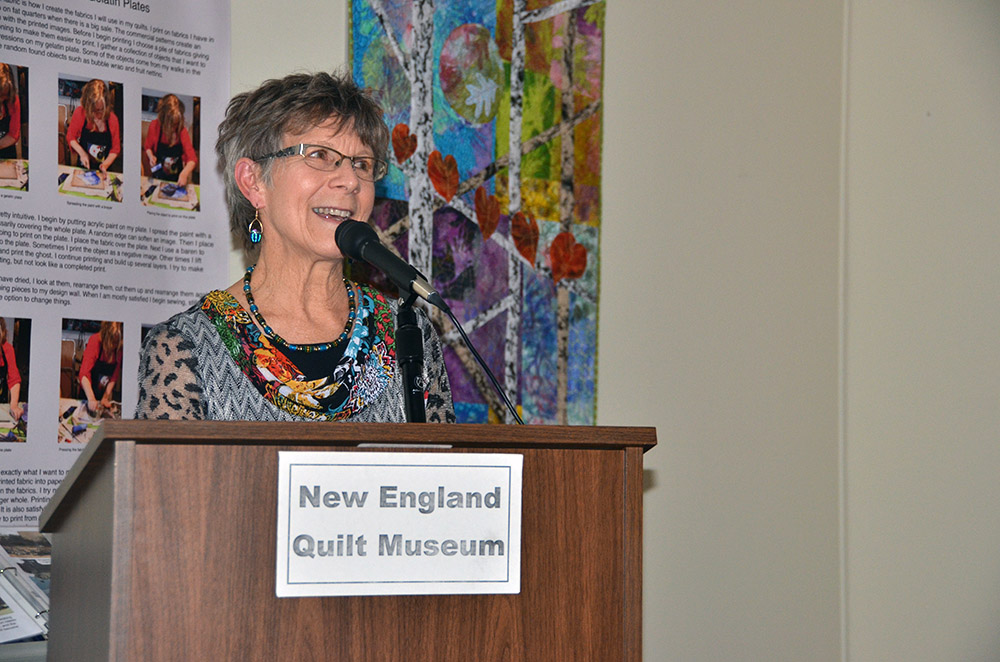
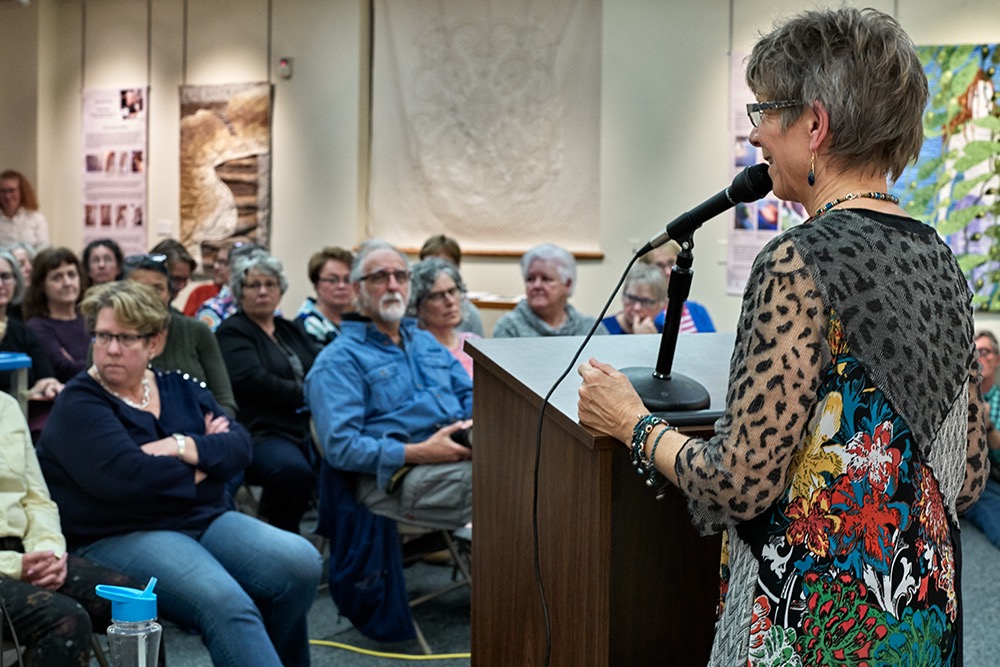
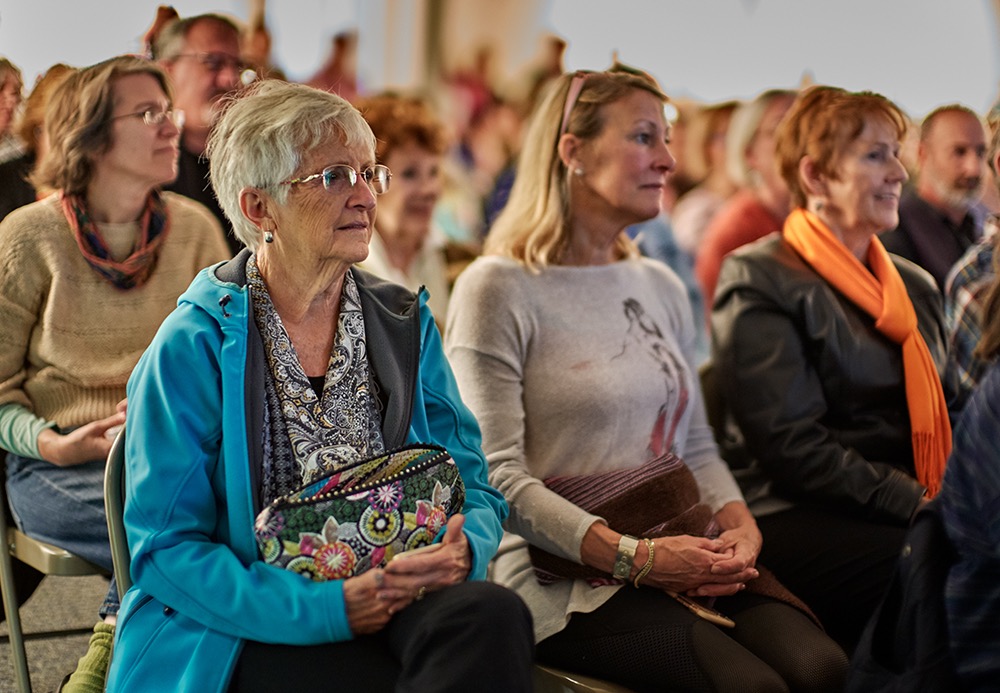
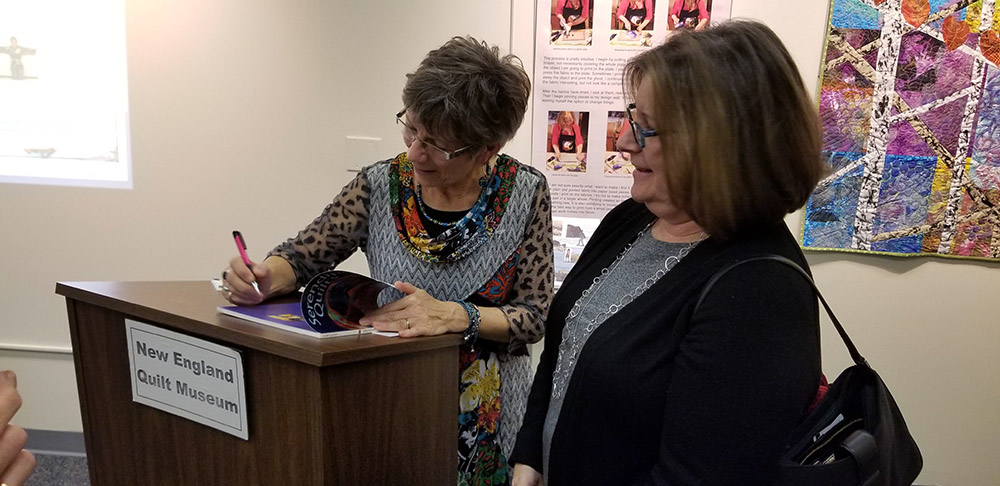
After the talk there were refreshments and time to take in the exhibit. I met with visitors, some of whom were old friends.
Too soon four o’clock rolled around and the event was over. The show itself continues until the end of the year, December 30th, so if you’re considering a visit, you still have time.
Tom and I stayed overnight in a nearby town so that we could meet up the next day to tour the exhibit with a few students from my upcoming retreat. Linda Anderson, Dawn Erikson, Kathi Allen and Kathi’s husband Bill either flew in a day early or arrived that morning, then drove down from Portland. Maine so they could see the show.
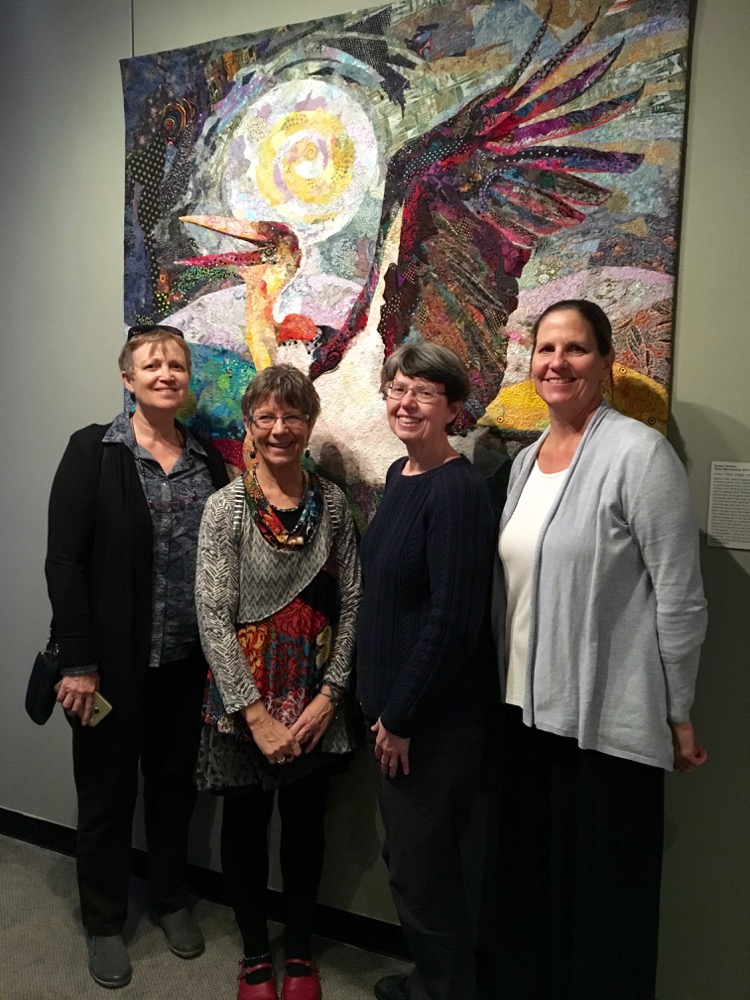
While there the second day, Tom and I figured it was a good time to get a couple of shots of us together—one with our son Sam’s portrait, “Peace, Love, Tie-Dye, Save the Whales,” and one with the denim bed quilt I made for Tom when we were first dating, 33 years ago.
Once again my thanks to the staff of the New England Quilt Museum, including Curator Pam Weeks, Executive Director Nora Burchfield, the docents who watch over the exhibits, the Board of Directors, and the volunteers who hung my exhibit. I am so happy and honored to be able to share my artwork with so many quilt lovers.
Around Lowell. MA
Before meeting my three students, Tom and I had Sunday morning to wander around Lowell. Lowell is a former fabric mill town with its heyday being the mid-1800’s to the mid 1900’s. At one time it was one of the largest producer of fabrics in the world, harnessing the power of the two nearby rivers to run the massive factories. The mills are long closed now and Lowell has had some time to rebound from a serious downturn in its economic and social well-being as the mills shut down. Upon high recommendations, we decided to visit the Boott Cotton Mills Museum to learn a little more about the industry and the area.
On the way to this museum, we walked through the Lucy Larcom Park along the canal. As we soon learned, Lucy was a labor organizer for the thousands of women—mill girls, they were called—who worked in the mills. The park has steel and granite outcroppings featuring inspirational words from her and others as they fought for decent working conditions and a living wage.
Much of the Boott Cotton Mills has been repurposed into office and residential space. But a portion of the original complex has been turned into a museum. The highlight of the museum is the still functioning weaving machinery. Click on any of the images above or below to view it larger.
Beware: the videos of the weaving machinery below demonstrate how loud working in these mills were”“watch the volume! How lucky I feel to be working with fabric in the way that I do now, and not the way they did then, or the way many still do in other countries.
Interesting quotes below from a few former factory workers. Again, click on photos to enlarge.
I have to say I have greater appreciation for calicos now too. It’s not what I reach for these days, but they were the precursors of our colorful and beautiful quilting cottons of today.
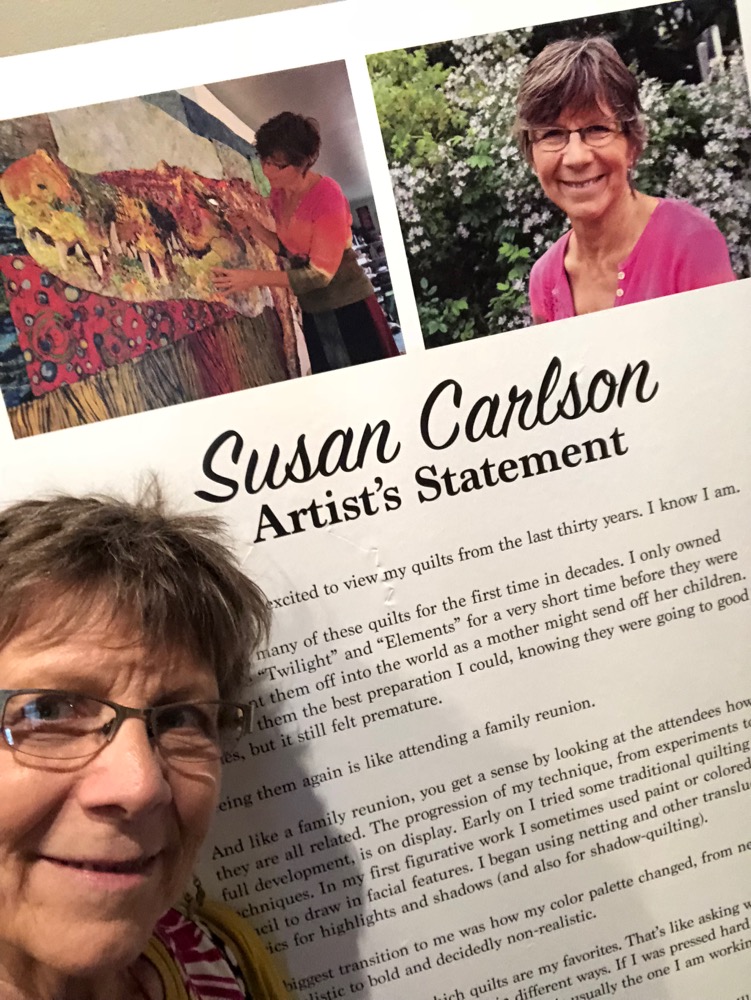


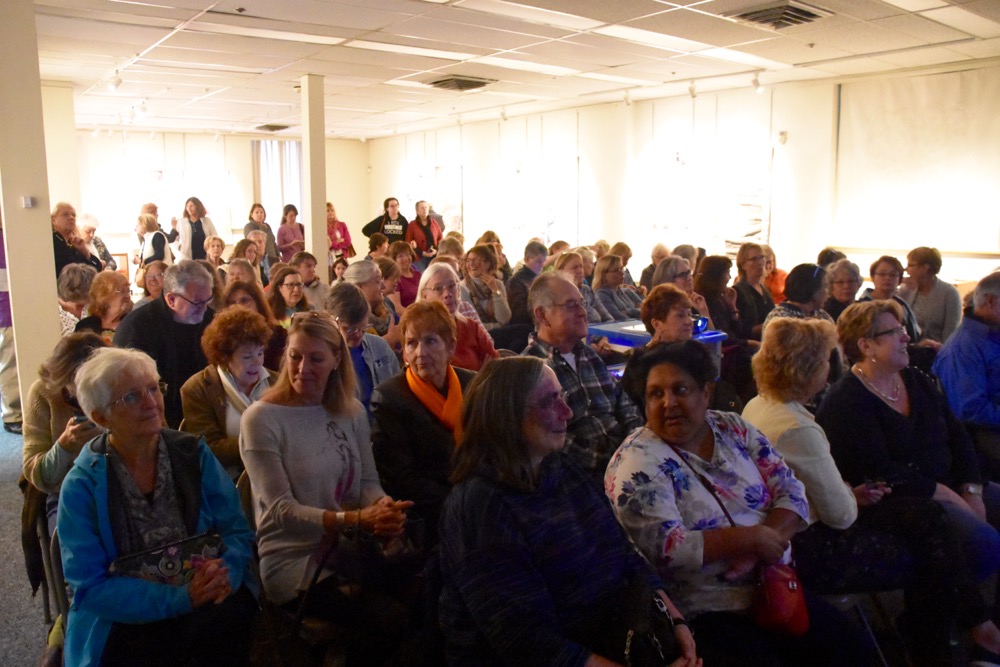
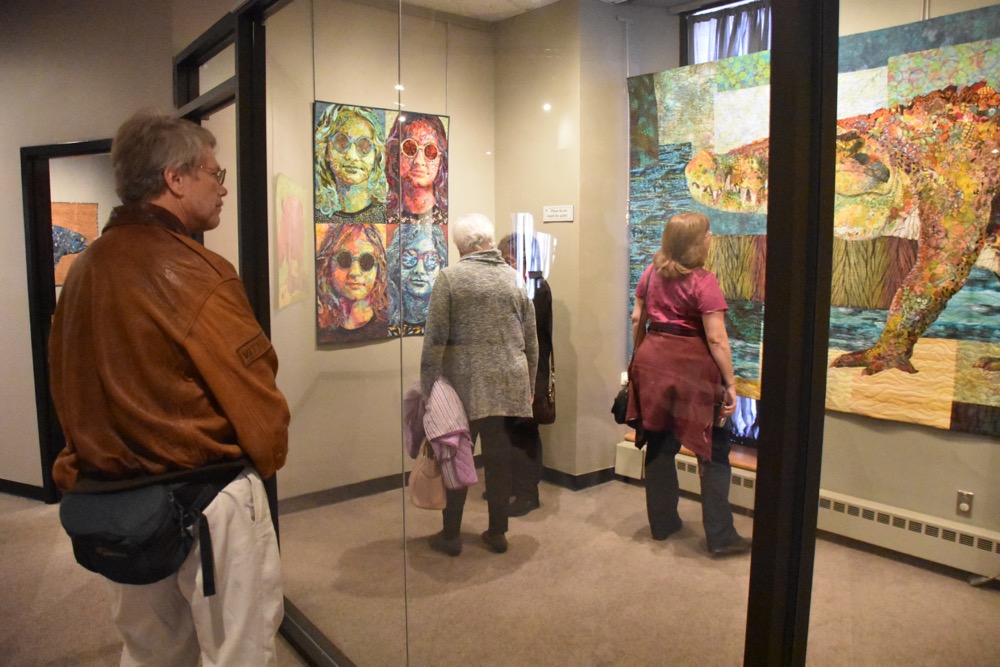
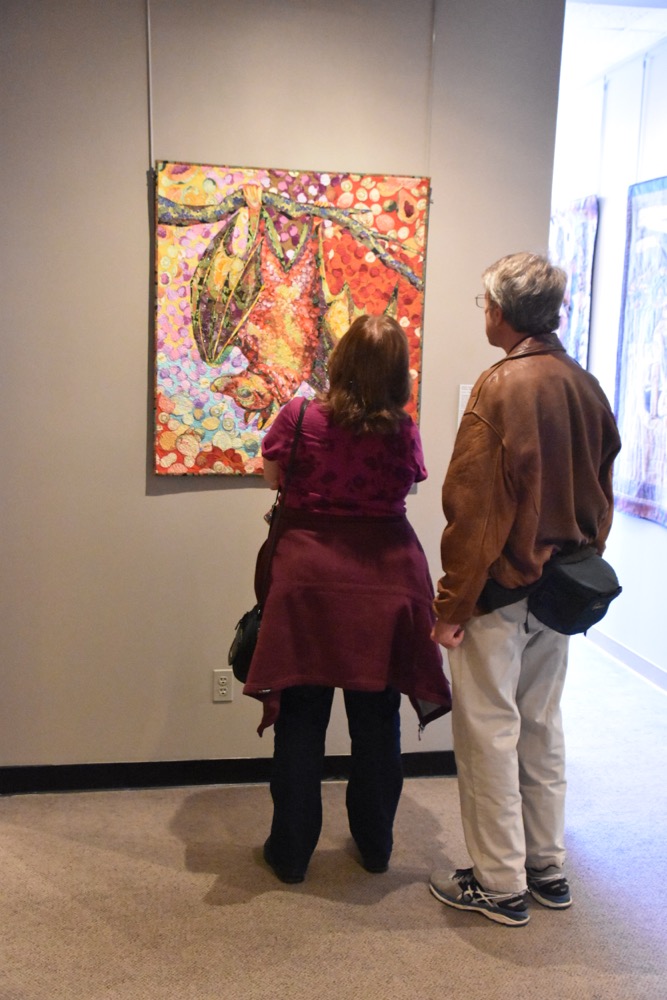
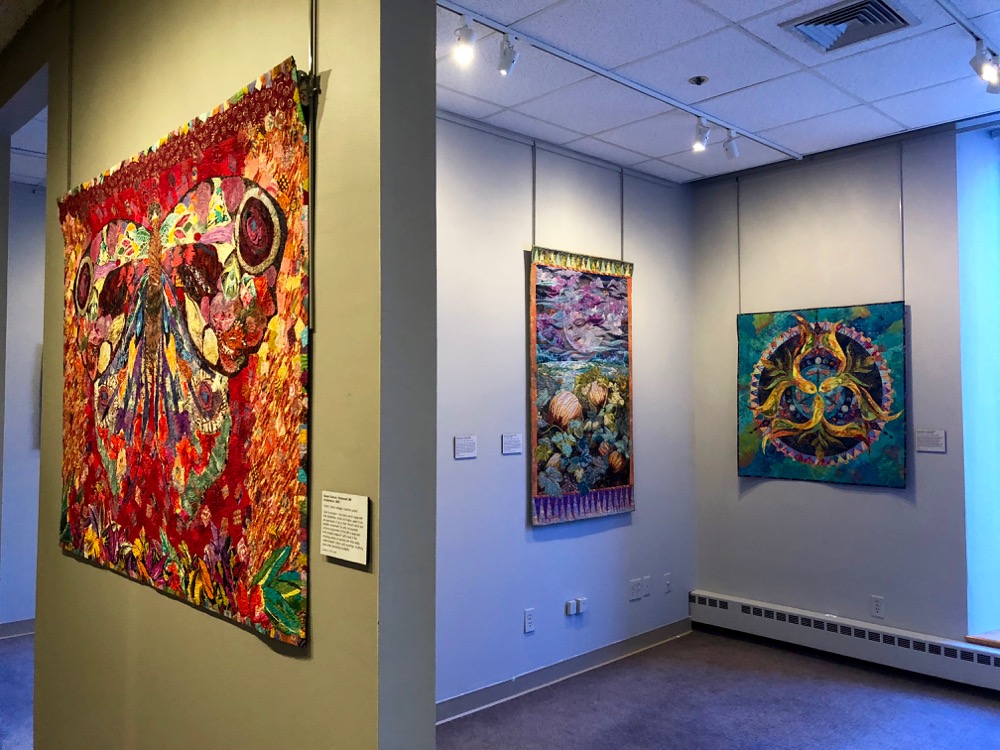
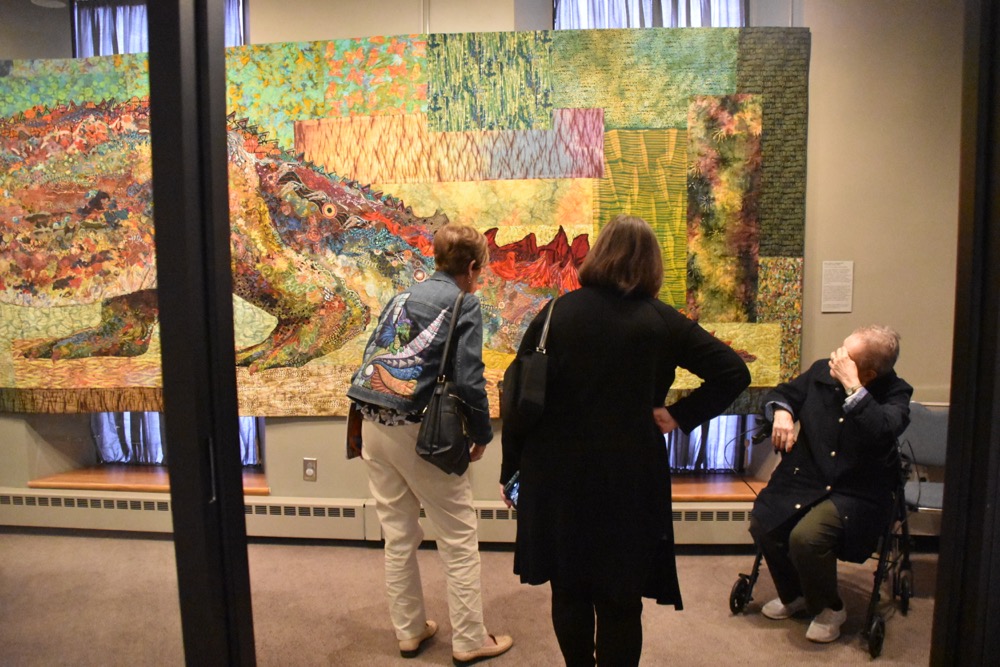


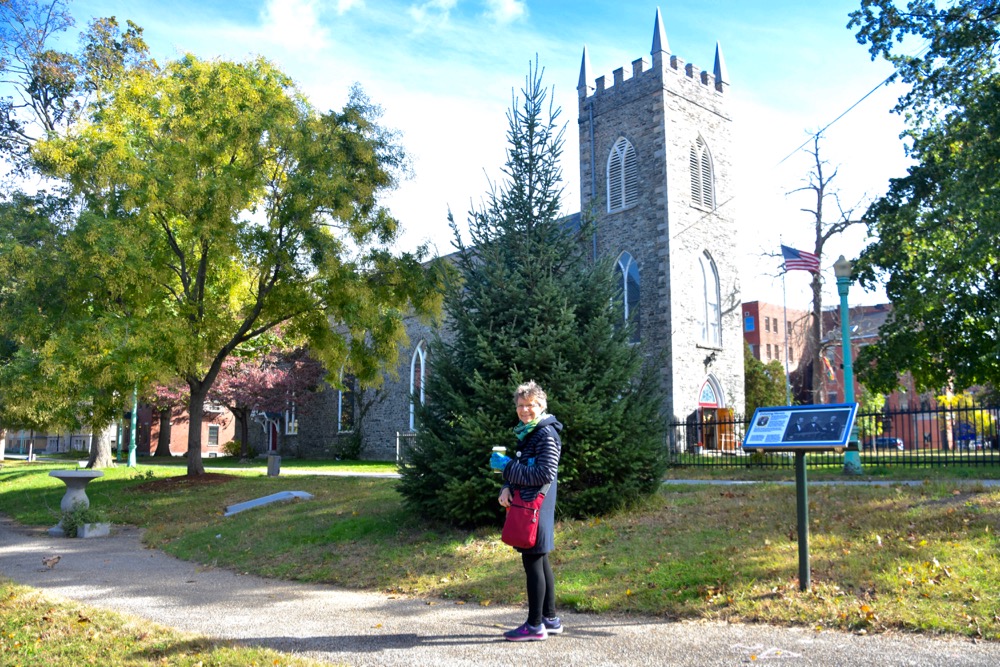
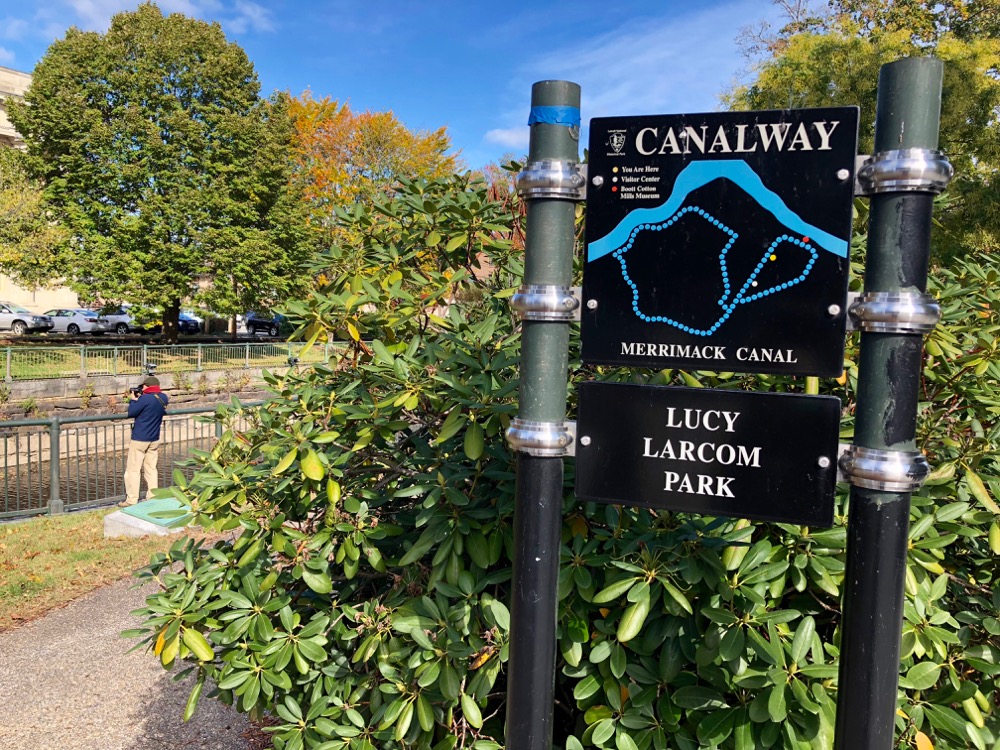
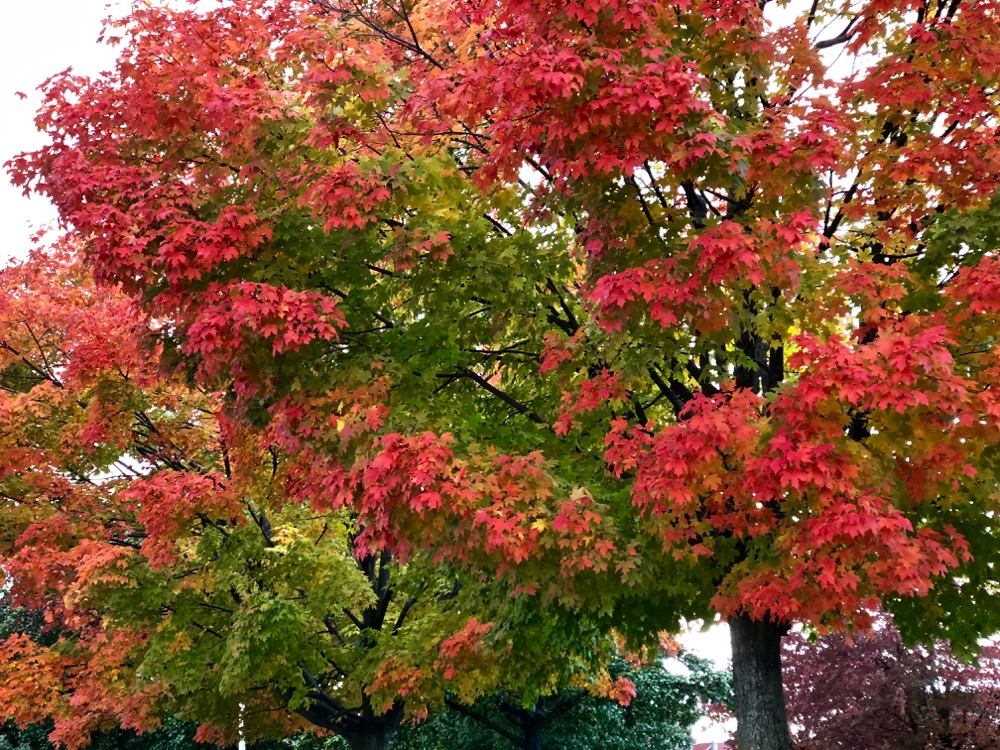






































You amaze me. Thank you, thank you for your art!!!!
Beautiful show, Susan! fun and inspiring to see more of your early work.to see I have never been to Lowell, but read a wonderful novel about the women of the mill called The Daring Ladies of Lowell. Read it if you haven’t. It brings to life what the conditions were like for those who worked in the fabric mills. Again, thanks for a wonderful blog! Nancy
Congratulations on a beautiful exhibition. How gratifying it must be to look back on this body of work and relive the making of each. I am so happy for you and Tom. Beautiful, beautiful!! I so enjoyed this “tourâ€.
Thanks for sharing. Susan, I love your dress! (Hope that doesn’t sound too shallow.)
Enjoy this well deserved moment of fame. Wish I could visit but there is this big ocean to cross.
Congratulations Susan on your most amazing show.
I have a question for you …
when are you going to have a workshop about designing your own
(cooler than cool!!! ) line of clothing?
All the emphasis is on the quilts, but I am so delighted by your colorful style ,and bold design of garments that you wear with such charm!!
The museum has done a great job -even color coordinating the backgrounds for
specific quilts. The JOY of color!!
So enjoyed seeing your pieces and listening to your talk. Thank you Glenda Carey
Beautiful work! The sounds of the mills are completely familiar to me. My hometown in Scotland resonated with this sound from many mills 5 days a week until the late 1960’s. Many weavers had hearing issues as they grew older from the damage caused from working 8-9 hours a day on the factory floor filled with large looms weaving jute (and some linens).